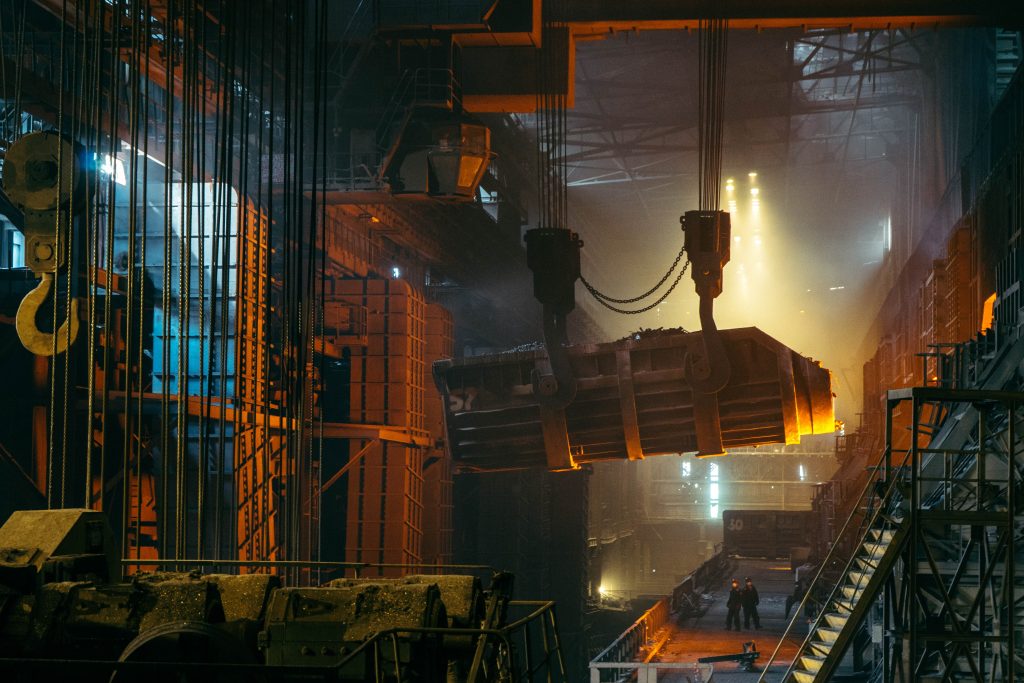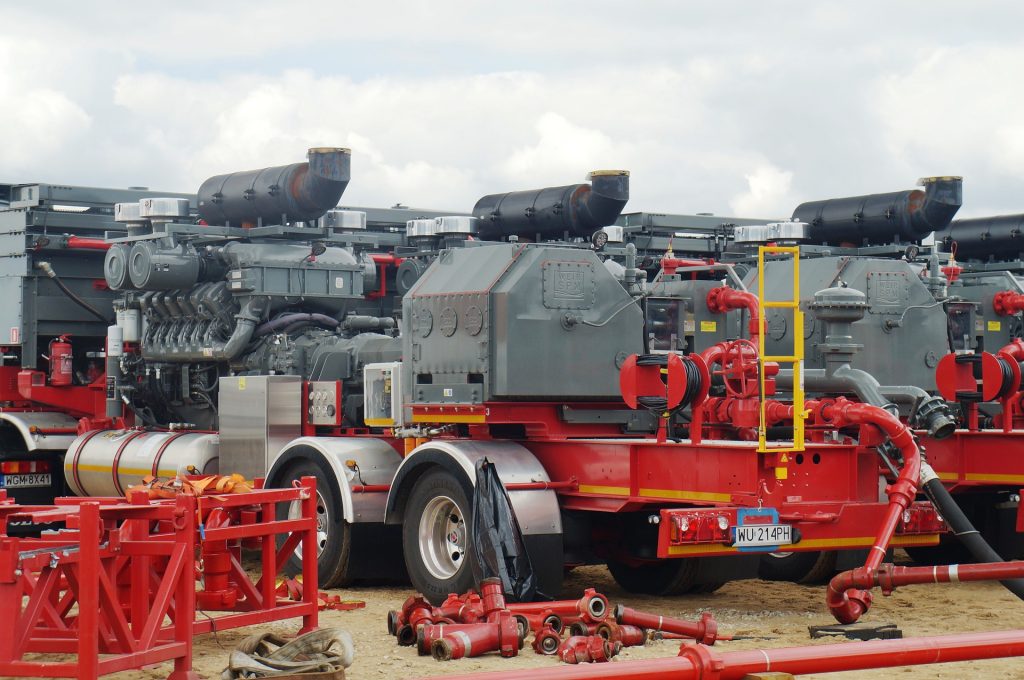The introduction of fracking has revolutionized the oil and gas industry. Anyone who’s been following the latest fracking statistics could agree to this.
Hydraulic fracturing, known as fracking, is one of the most effective ways of retrieving natural gas and oil out of shale. It’s a good alternative that aims to address the issue of depleting crude oil deposits worldwide.
But the process comes at a price, as shown by facts about fracking. Environmental and safety concerns are at the top of the list.
To understand better the impact that fracking has, we need to look at the numbers. But before we launch into the details, here are some facts to warm you up.
Top Fracking Facts: Editor’s Choice
- Fracking has created over 1.7 million wells.
- The fracking industry supports 5.6% of the total American employment.
- Fracking will be a $68 billion market by 2024.
- By 2025, estimated health damages caused by methane leakage during fracking would cost $13-29 billion each year.
- Frack fluid consists of 99.5% water and sand.
- 3.7% of methane is leaked into the atmosphere during a fracking process.
- Fracking produces approximately 3,400 billion L of wastewater each year.
- One well can be fracked up to 20 times.

Fracking Statistics in the US
Now, to get straight to the fracking facts and myths, let’s dive into the stats.
1. Over 1.7 million wells have been created from fracking.
Ever since fracking started in the U.S. in the late 1940s, the process has generated more than 1.7 million wells.
According to fracking production stats, this number could produce up to 600 trillion cubic feet of natural gas and, at the same time, oil exceeding seven billion barrels in amount.
On average, hydraulic fracturing takes three to five days to complete. After which, the well is ready for safe and long-term production of oil and natural gas.
2. From 2010 to 2020, fracking statistics reveal that America’s total crude oil production roughly tripled.
Fracking continues to go upward, considering its growing contribution to the energy sector.
Over the past decade, the total production of crude oil in the U.S. has roughly tripled due to the increasing number of fracking activities in the country.
Also, fracking facts and statistics show the nation’s total consumption of imported oil fell sharply over the same period. This suggests an improvement in the country’s capability of supplying more than half of its total fuel needs.
3. A fracking ban can cause the U.S. huge losses in jobs, tax revenue, and GDP by 2025.
The hard facts about fracking reveal that the U.S. could lose 19 million jobs by 2025 if fracking were stopped. Local, state, and federal tax revenues will also decline by nearly $1.9 trillion.
Additionally, implementing a ban on fracking could significantly reduce the gross domestic product to $7.1 trillion, according to forecasts.
4. Natural gas production in the U.S. will grow by 44% between 2011 and 2040.
The shale gas industry in the U.S. has been booming and is expected to grow even more in the next decades, fracking statistics show. As a result, numerous jobs are created for millions of individuals.
Soon after, other countries such as China, South Africa, and the U.K. started to consider the possibility of benefitting from homegrown energy through shale development.
5. The fracking industry supports 5.6% of the total American employment.
The rapid growth of the oil production industry creates more high-paying jobs and improves personal incomes in many states. Fracking stats show there are 9.8 million jobs that the shale energy sector supports.
Additionally, the expansive development of the U.S. natural gas reserves will help boost employment in the manufacturing industry by generating more than one million additional jobs by 2025.
6. Fracking will be a $68 billion market by 2024.
Statistics on the growth of fracking suggest that the natural gas market will have a global market value of over $60 billion by 2024.
The rapid depletion of conventional resources drives investments toward the exploration of alternative ones.
Natural gas extraction will be the most significant reason fracking expands to many parts of the world. Given its wide applications across industries, natural gas is not far from witnessing considerable growth in the future.
7. Drilling rigs for natural gas reached a record low of 68 in 2020.
There has been a recent decline in activities related to fracking in the U.S. Statistics show that starting mid-March of 2020, the number of natural drilling rigs fell sharply as the demand for natural gas decreased.
In July, the country recorded its lowest count ever of natural gas-directed rigs – 68. Consequently, this drove down the crude oil prices.
With the COVID-19 pandemic still around us causing major economic setbacks, the number of natural gas drilling rigs remained low throughout the year.
8. Natural gas production is expected to fall by 2% in 2021 but will rise by the same percentage in 2022.
COVID-19 responses caused disruptions in drilling activities resulting in natural gas production levels declining in 2020.
According to fracking statistics in the U.S., the country will have another 2% reduction in the annual marketed natural gas production in 2021.
But in 2022, the said fall will reverse. The U.S. IEA estimates that production levels will rise by 2% from 95.9 billion cubic feet per day to 97.6 Bcf/d.
9. Capital expenditures for unconventional oil and natural gas activities between 2012 and 2035 are estimated at $5.1 trillion.
Unconventional oil and natural gas extraction seem promising for long-term economic activity given that it’s one of the major areas where government spending goes.
Statistics on fracking demonstrated that capital expenditures in this sector will exceed approximately $5 trillion over a two-decade period.
More than half of this amount, $3 trillion, goes to unconventional natural gas activities, while the remaining $2.1 trillion covers unconventional oil activities.
10. By 2025, health damages caused by methane leakage during fracking are estimated at $13-29 billion each year.
Given how rapidly the oil and gas industry booms and the vast number of toxic gases it emits, human health damages can be that significant in return.
Based on some facts about fracking and energy, methane leaks’ harmful effect on human health can add up to $29 billion each year by 2025.

Summary of Facts About Fracking
11. The U.S. is the world’s largest producer of natural gas.
Fracking stats show that the U.S. produced approximately 920 billion cubic meters of natural gas in 2019. Astoundingly, that amount is roughly 240 billion cubic meters more than Russia’s produce.
In terms of proven natural gas reserves, the U.S. ranked fifth. It also has the world’s ninth-largest oil reserves.
In addition to all this, it is the world’s largest oil-consuming nation. The need for oil in the U.S. outweighs just about everything else.
12. Texas is America’s top producer of shale gas.
States in the U.S. differ in their fracking production capabilities. The latest fracking statistics by state demonstrated that Texas produces more shale gas than the other states.
The state’s output production reaches 7.4 trillion cubic feet. Situated within the Appalachian basin, Pennsylvania came next with a production output of 6.7 trillion cubic feet.
13. Frack fluid consists of 99.5% water and sand.
Based on fracking facts, chemicals of various types comprised the other 0.5% of the liquid. Its portions and designs are not available to the public due to laws protecting proprietary information.
But one thing is for sure; these chemicals are harmful to human health. People living near the fracking sites can be at risk when the chemicals enter water supplies.
14. Fracking uses a mix of 1,084 different chemicals.
It’s true that the chemical composition of a fracking formula is only a small portion. But if we look at the information on fracking contamination, statistics show that this comprises more than 1,000 different types.
There are many other potentially hazardous chemicals present, including methane, ethylene glycol, and propargyl alcohol, on top of lead and benzene.
15. Natural gas is 80% methane, whose global warming potential is 84 times that of C02 over a two-decade horizon.
Methane is a significant pollutant released during the fracking process, an alarming fact about fracking that is often ignored. At the same time, it’s also a major greenhouse gas.
Experts claim that methane has a global warming potential that’s 84 times higher than that of carbon dioxide on a 20-year horizon. This means that methane contributes more to global climate change.
16. 3.7% of methane is leaked into the atmosphere during the fracking process.
When methane is pumped out from a fracked well, some natural gas is released into the atmosphere. Stats on fracking reveal that the leakage rate is 3.7%, which is greater than the average of 1.9% for 11 other major U.S. basins.
Considering that this rate is also higher than any of the oil and gas fields recorded in the U.S. before, this undercuts the notion about the country’s energy sector becoming much cleaner due to burning natural gas.
17. Fracking produces approximately 3,400 billion L of wastewater each year.
Fracking requires a huge volume of water. Throughout the process, much of this water also comes back up as wastewater.
The fracking water pollution statistics from the Groundwater Protection Council (GWPC) show about 3,400 L of wastewater produced by fracking annually.
If not disposed of properly, this wastewater can cause water contamination and would be harmful to humans.

Fracking Pros and Cons
Fracking drives a large portion of the United States economy. But seeing there are many facts about the harm of fracking, it’s also easy to criticize the industry.
First, let’s take a look at some good facts about fracking:
18. Fracking helps a country become more energy-independent.
Energy security is a favorable condition that America would like to improve. Thanks to fracking, the U.S. was able to boost domestic oil production and is now less dependent on the Middle East for energy.
One fracking benefit statistics tell us is that this unconventional oil extraction offers fuel security throughout the country for about 100 years.
19. Fracking can reduce air pollution when done well.
One of the good things we can see from fracking pollution facts is that the activity can be a safer and better energy production method. It’s for the reason that it burns cleaner than other fossil fuels (i.e., coal).
Burning gas releases lesser carbon dioxide into the atmosphere. Thus, it protects the atmosphere while generating more energy. Its fatality rate is also relatively lower compared to coal.
20. Fracking helps lower global oil prices.
As to the benefits of fracking, facts show that hydraulic fracturing has contributed significantly to increased oil and gas supply in the United States.
As more energy supply becomes available and accessible to consumers, oil prices worldwide go down. Now, it’s time to examine some of the bad facts about fracking:
21. Fracking causes earthquakes.
For about a decade, human-induced earthquakes across the mid-continent of America have been reportedly increasing.
Apparently, fracking activities mainly triggered this rise. Researchers from various states provide some facts about earthquakes caused by fracking.
They have identified more than 600 small earthquakes in Ohio, Oklahoma, Pennsylvania, Texas, and West Virginia, where fracking wells are prevalent.
They also observed that hydraulic fracturing generates seismicity more than wastewater disposal does.
22. Fracking is not covered by the Safe Drinking Water Act.
This federal law seeks to ensure all community water systems in America receive safe drinking water while protecting groundwater.
The Act regulates underground injection activities, but unfortunately, it does not cover fracking. This makes fracking a major threat to water pollution.
In Pennsylvania, for example, fracking water contamination statistics show over 260 instances of private water wells contaminated by fracking since 2005.
23. Fracking can negatively impact infants’ health at birth.
This is undoubtedly one of the shocking facts about fracking. Several studies consistently offer evidence linking fracking to poor infants’ health. Let’s take a study conducted across Oklahoma counties as an example.
Results show that mothers who live closer to a fracking site when giving birth are more likely to have unhealthy babies. Such infant conditions include being underweight and premature, among others.

Other Interesting Facts About Fracking
24. In 1947, fracking was used as an experiment to obtain natural gas from limestone.
Hydraulic fracking facts reveal that the process started as an experimental technology for harvesting natural gas from limestone in Kansas in 1947.
Two years later, an oil service company named Halliburton took the experimental process to the commercial level.
In the 1950s, the use of fracking grew exponentially, with more than 3,000 wells being fractured hydraulically every month.
25. One well can be fracked up to 20 times.
Once a well is ready for fracking, it can be a long-term source of natural gas. According to fracking facts, it’s possible to frack a single well up to 20 times.
Although the fracking process requires only a mixture of water and some chemicals, the amount needed can be somewhat overwhelming.
Each frack requires up to 8 million gallons of water and 40,000 gallons of chemicals.
26. The US natural gas reserves will last for 93 more years.
One of the positive facts about fracking is that it helped the U.S. become less dependent on other countries for its energy needs. America is now very much capable of producing its oil and natural gas.
However, the issue of until when remains considering that fossil fuels are not infinite. According to experts, the U.S. natural reserves are enough to last for 93 more years while nearly 283 years for coal.
Key Takeaways
Fracking has both its advantages and disadvantages. It’s true that it helped the economy create more jobs, lower oil and gas prices, and increase the domestic fuel energy supply.
However, it has also caused harm to the environment and the people.
Until a clear policy to change the status quo and eliminate over-reliance on finite fossil fuels is implemented, humans and the environment continue to suffer.
Frequently Asked Questions
As to the number of deaths due to fracking air pollution, statistics show this can be anywhere from 1,200 to 4,600 between 2004 and 2016.
Fracking produces 67% or two-thirds of the United States’ natural gas. Additionally, oil fracking facts show about 50% of the nation’s oil comes from hydraulic fracturing.
Over the past decades, the American energy system experienced breakthroughs due to fracking. This is one of the most important facts about fracking that shouldn’t be overlooked. The unconventional energy extraction has benefited the nation substantially by lowering energy prices, reducing air pollution, creating more jobs, and providing greater energy security.
Yes, according to a Stanford professor! While the stats about how dangerous fracking is can’t be ignored, it’s also undeniable that fracking’s benefits far outweigh its costs, especially if done properly. Fracking statistics show there are 250,000 fracked wells operating under proper regulations in the U.S. These wells demonstrate how fracking can be safe for the environment and for everyone else.
- API
- Ballot Pedia
- Chemical & Engineering News
- CMU
- Conserve Energy Future
- Future of Working
- Green Matters
- Global Energy Institute
- Investopedia
- Investopedia
- Investopedia
- IPAA
- National Geographic
- New Scientist
- Oil Field Technology
- ProCon
- Science Daily
- SERC
- Springer Link
- Statista
- Statista
- U.S. Energy Information Administration
- U.S. Energy Information Administration
